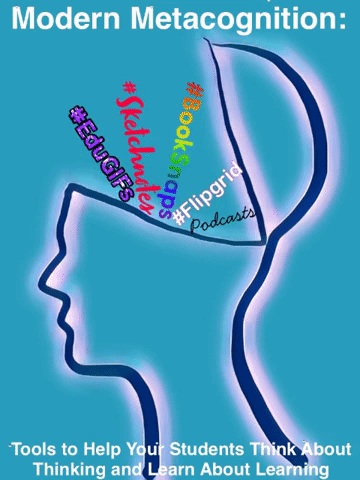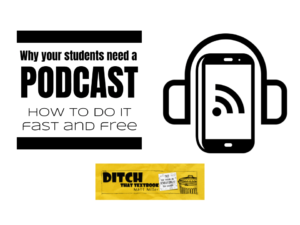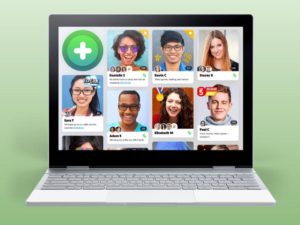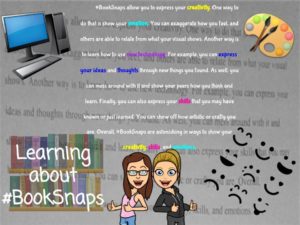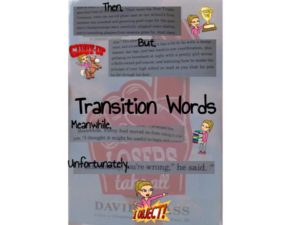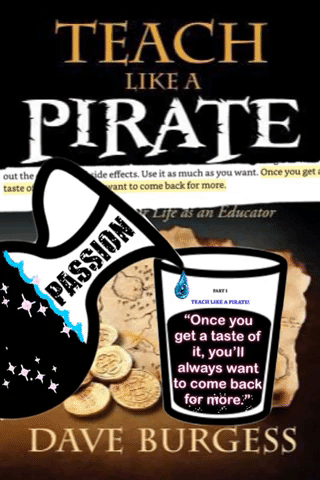Reflecting on your thinking and being aware of your own thinking process is what metacognition is all about.
What’cha thinking about? How did your thoughts end up there?
As educators, teaching our students to think about how they think and how they learn is a game-changer. It’s not a Common Core standard per say, but if metacognition is mastered, the effects on student learning can be anything but common! With a little time, a lot of reflection, and unlimited choice (this is critical) we can help students become better thinkers and better learners!
Let’s think about this. When you get on a bike, you typically just begin riding, you don’t think about all the little things that it took to get you there. You had to prepare for the bike ride, gain balance, and increase momentum to keep going. You’ve found little tricks that work for you, that just become habit. The same goes for thinking and learning. Thinking becomes so automatic in nature that we don’t stop to reflect on how we did something, or how we could do it again, or even better yet, how we could improve next time. We just do it.
How can we prevent our students from “just doing it” with their learning? How can we get them to stop, reflect, and grow as learners? With metacognition, reflecting on your thinking process in order to understand how you arrived at your conclusion is important, but so is being aware of how you think, what helps you think, and most of all what helps you learn.
Metacognition isn’t a new concept by any means. However, the tools available to assist in the thinking and learning process are! Once a student finds a tool that works for them, they’ll have that monumental lightbulb moment! And once they do, let them use that thing or do that thing!
We can guide students to those lightbulb moments by equipping them with a modern metacognition treasure chest full of precious tools. Through trial and error, and a significant growth mindset, I’ve discovered a few treasure tools that help my students learn.
Ideally, students would be lead to discover these tools at the beginning of the school year (perhaps through get-to-know-you activities) so they can dig through their treasure chest of tools to grab the perfect one for the learning adventure at hand. Once they’ve been introduced to various tools, students quickly realize what works for them and their learning style (4 modalities of learning: tactile, visual, auditory, and kinesthetic).
While there are numerous tools available, here are a few diverse treasures you can place into your students’ modern metacognition treasure chests:
Tactile
#Sketchnotes: Sketchnoting is a particularly effective visual form of note-taking, kind of like doodling with a purpose. Honestly, when used properly, I think it might be one of the best tools for reflecting on one’s thinking and learning. With my students, and myself, I enjoy taking the notes in black and then going back to color them in to reenact with the information a 2nd time.
This process of encountering the content multiple times helps solidify learning. Sketchnotes can be created on paper or digitally. Paper by FiftyThree and Procreate are a couple of applications that work well for creating your sketches. For more information on #Sketchnotes check out this YouTube Video on Carrie Baughcum’s channel.
Other great educators to follow for information on #Sketchnotes are (in no particular order): Monica Spillman, Julie Woodard, Teresa Gross, Sylvia Duckworth, and Matt Miller (Matt has a great blog post on creating #sketchnotes).

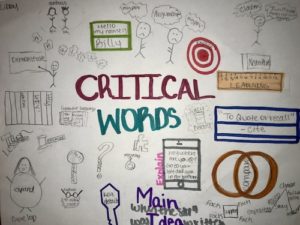
(Above are a few student #sketchnotes. The first is a genre #sketchnote created using Paper by FiftyThree on an iPad. The other two are in progress sketches, they have been created and are in the reinforcement stage of adding color.)
#EduGIFs: #EduGIFs are a form of interpersonal communication that allow us to express a feeling or experience as efficiently as possible. They are playful, quirky, and fun. #EduGIFs can be used to learn a new concept, to solidify a point, or to assess understanding.
The cool thing about them is that they bring static images to life, break down steps, show processes, visualize key concepts, demonstrate knowledge, and most importantly, make content memorable. You can also add them to a created #Sketchnote, worksheet, or study guide and students can add animations to represent their thinking related to each key concept as yet another way to reinforce their learning.
Find out more about #EduGIFs including tutorials and ideas for using them in your classroom created by me, (@KimSnodgrass), on Dave Burgess’s “Get Your GIF On!” blog post at daveburgess.com
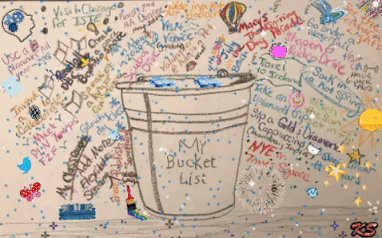
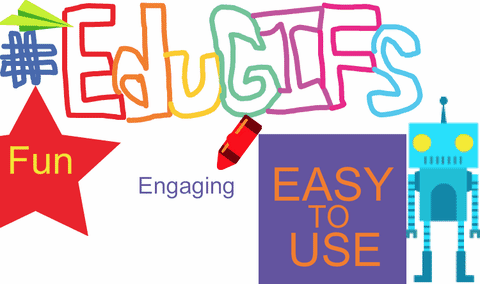
(Above is a #Sketchnote that I created as a bucket list for 2018 & beyond. After I finished the sketch, I added color and then turned it into a #EduGIFs creation using GIPHY. The #EduGIF on the right was created using ABCYA Animate. Also, check out these #EduGIFs that my students created to reflect on word choice.)
[scroll down to keep reading]
Auditory
Podcasts: Most computers, tablets, and smartphones have features to read information aloud, however, imagine if your students could voice their own reflections by creating a podcast? Not only would this help develop student voice, but they would articulate their learning by reflecting verbally, and could go back to it later to review the content and information as needed. Publishing students’ podcasts would help them reach a global audience and make their learning even more relevant.
Find out more about creating podcasts on this Matt Miller blog post.
Visual
Flipgrid: #FlipgridFever has taken many by storm. There are a million and one uses for this EdTech Tool, and it’s just perfect for students to use to reflect on their thinking. Not only can students use it to preserve their thoughts, but they can also collaborate and learn from others. Flipgrid knows no boundaries, so you can even take collaboration to a global level by sharing your grid and seeking out responses from others around the world.
For more ideas on how to use Flipgrid for student thinking and learning check out Matt Miller’s blog post here!
Kinesthetic
#BookSnaps: Using technology typically requires students to be involved in hands-on activities. Although Tara Martin’s #BookSnaps could fall into several categories of learning modalities, I’m going to place them in kinesthetic tools. #BookSnaps are a fabulous reflection tool for students and allow them to interact hands-on with content while tying in their thoughts, feelings, and emotions as well. To take kinesthetic movement a step further with #BookSnaps, I send my students on a #BookSnaps Scavenger Hunt.
Check out more about the #BookSnaps Scavenger Hunt here! For general information on #BookSnaps, visit Tara’s Website and check out her post on Dave Burgess’s blog.
(The first two images are #BookSnaps a couple of my student created. In the first, they used their own writing to reflect on why they enjoy using this awesome learning tool and in the second one, they used it to solidify what transition words are by using examples from one of their books. The last is an #BookSnaps/#EduGIFs smash that I created from #TLAP by Dave Burgess.)
Now, what are you waiting for? Hurry! Go! Teach these Modern Metacognition Tools to your students today! Oh, and be sure to add them to your plans for next year too!
About Kimberly Snodgrass
 You’re asked what you want to be when you grow up from the time you are teeny tiny. After a couple of degrees (bachelors in advertising and a masters in management), and a couple of careers, I FINALLY decided what I wanted to be. I must say I LOVE, LOVE, LOVE my “job”! I can’t image what I would do without teaching; it’s my passion. My path to arrive at my dream job was a little unique though.
You’re asked what you want to be when you grow up from the time you are teeny tiny. After a couple of degrees (bachelors in advertising and a masters in management), and a couple of careers, I FINALLY decided what I wanted to be. I must say I LOVE, LOVE, LOVE my “job”! I can’t image what I would do without teaching; it’s my passion. My path to arrive at my dream job was a little unique though. I received a B.A. from the University of Nebraska – Lincoln in advertising with concentrations in English, history, and marketing in 2003. A few years later, I received my M.A. degree in Management from Bellevue University. Then I finally decided what I wanted to be and I completed my 7-12 Language Arts teaching endorsement from the University of Nebraska – Kearney through their transition to teaching program. I also have Reading Specialist Endorsement hours through Doane College and am in the process of pursuing a masters in Curriculum, Instruction, and Leadership through Wayne State College.
I currently teach teen literature and English at York Middle School in York, Nebraska. Before joining the teaching staff at Y.M.S, I taught 9-12 language arts at Hampton Public School. Prior to that, I taught 6th grade reading and 9-12 language arts at Dorchester Public School. I am a strong advocate of choice driven, hands-on, inquiry-based learning, and try to involve my students in a variety of problem-solving and technology-infused activities.


